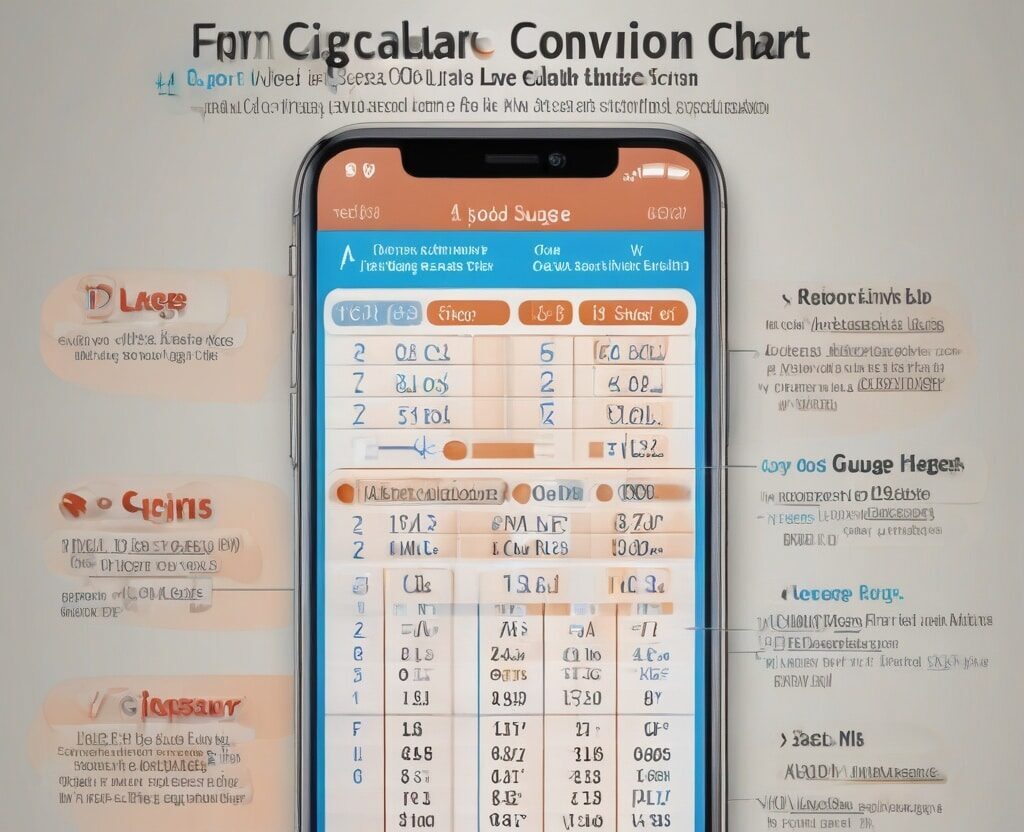A1C Calculator Conversion Chart: Quickly Convert A1C Levels
Having trouble figuring out your A1C test results, and their implications for your blood sugar levels? The A1C calculator conversion to blood sugar is insightful for diabetics, yielding quick results. Furthermore, the A1C test plays a role in managing diabetes by measuring the glucose levels over the last 2 to 3 months.
This article aims to assist you in utilizing an A1C calculator conversion chart to gain an understanding of your blood sugar management and ways to enhance it. Continue reading for insights!
Comprehending A1C Levels
A1C levels indicate the blood sugar levels over the past 2 to 3 months. Individuals with diabetes should undergo an A1C lab test twice a year.
What is Measured by A1C?
A1C assesses the percentage of hemoglobin in your blood. Glycated hemoglobin forms when glucose in your bloodstream binds to hemoglobin a protein found in blood cells for carrying oxygen.
This test mirrors the quantity of glucose attached to hemoglobin over the three months offering both medical professionals and patients a comprehensive view of overall blood glucose management. Elevated levels signify diabetes control, which may result in health issues over time.
Individuals, with blood glucose or those meeting treatment targets should undergo an A1C lab test at twice a year. Conversely individuals adjusting treatments or failing to meet goals require testing.
Regularly monitoring plays a role, in managing the diagnosis of diabetes and insulin therapy by tracking long term trends in blood sugar conversion and glycated hemoglobin percentages.
How frequently should you get an A1C lab test?
It is suggested by the ADA to have an A1C lab test at twice a year for individuals with diabetes. However, if there has been a change in medication or treatment plan it is advisable to have the A1C test often approximately 4 times a year. Regular testing aids in monitoring and managing blood glucose levels.
The American Diabetes Association recommends that individuals with diabetes should undergo an A1C test as follows; If your A1C level is above your target your doctor may suggest testing every three months until you achieve the desired range below 7%.
What are the ranges and objectives for A1C?
The target range for people with diabetes is between 7% and 8%. For those without diabetes a normal A1C level is below 5.7%.
The objective is to maintain A1C levels, within the recommended range to decrease the risk of long term complications linked with diabetes like nerve damage kidney issues and eye problems.
It’s crucial for individuals to collaborate closely with their healthcare team to establish personalized A1C targets based on their health condition and medical background.
Shifting focus, from grasping the A1C ranges and objectives lets explore how an A1C conversion chart and online calculator can be used to manage diabetes.
How does A1C correlate with glucose averages?
A1C gives an overview of your blood sugar levels over the past 2 – 3 months. It calculates the percentage of hemoglobin in the blood that is attached to glucose.
- Typically an A1C level below 5.7% is considered normal while a level between 5.7% and 6.4% indicates prediabetes.
- An A1C level of 6.5% or above indicates diabetes.
Combining the A1C test with self monitoring blood sugar offers a picture of your glucose control over time. This insight aids in managing diabetes by adjusting lifestyle factors like changes, physical activities and medication management.
- An A1C test reflects how well you are handling your diabetes.
- The A1C result is displayed as a percentage (%); the higher the percentage, the higher your average blood glucose levels.
A1C Conversion Chart and Calculator
Learn, about how an A1C calculator can enhance your A1C levels. Keep reading for details.
What is an A1C calculator?
An A1C calculator is an online tool that converts your blood sugar levels into an estimated A1C level. It simplifies the process by providing convenient results.
By entering your blood sugar level the calculator promptly gives you an A1C value, which assists in monitoring and managing diabetes more effectively.
This useful tool supplements regular visits, to the doctor and lab tests empowering individuals to take steps towards maintaining A1C levels. However, do not substitute or make treatment changes without speaking to your doctor!
How does it operate?
The A1C calculator estimates your A1C using your blood sugar levels. Additionally, you input these levels from your glucose monitoring and the calculator then provides you with an estimated A1C level.
By utilizing this tool you can monitor changes, in your glucose levels over time. Adjust your diet or treatment plan accordingly for improved A1C outcomes.
Regularly using the A1C calculator alongside glucose monitoring can enhance your understanding of how different foods and activities impact your blood sugar. This allows you to make informed decisions tailored to manage and enhance your A1C levels.
How can it be utilized to enhance ones A1c levels?
Make use of an A1C conversion chart and calculator to keep tabs on and oversee your A1C levels. By entering your blood glucose values the calculator gives an estimated A1C level providing you with a picture of how effectively you’re handling your blood sugar.
This resource enables you to make informed choices regarding diet, exercise and medication adjustments to reach and sustain target A1C levels ultimately leading to diabetes management.
Consistently using the A1C calculator allows for steps, in managing blood sugar levels. It assists in establishing goals by visualizing the link between glucose averages and long term A1C levels. Regularly checking with this tool allows for interventions to enhance control.
In conclusion
Having a grasp of your A1C levels is vital for diabetes management. Utilize the hemoglobin A1C conversion chart to monitor and enhance your levels efficiently. Furthermore, with an A1C calculator and blood sugar conversion chart you can gain insights into the methods for controlling your glucose averages. Take control of your well being by employing these tools to establish and accomplish goals, for management of your condition.







